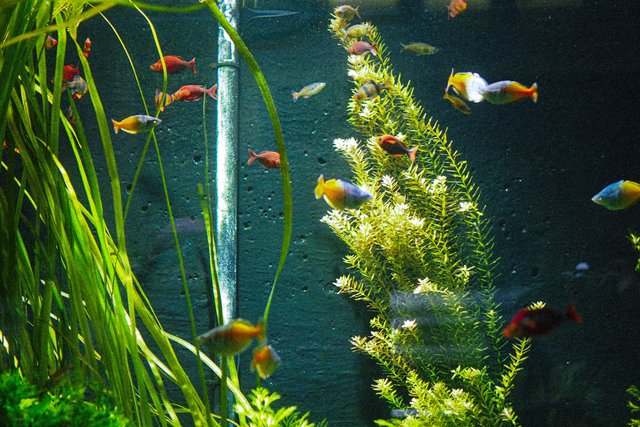The Importance of Substrate for Growing Healthy Aquarium Plants

Aquarium plants are a popular addition to many fish tanks, as they offer a range of benefits to both the aquatic environment and its inhabitants. From providing oxygen and filtering water to serving as a natural source of food and shelter for fish, aquarium plants can enhance the overall health and beauty of your tank and learn how to anchor aquarium plants in substrate
However, to ensure the health and longevity of your aquarium plants, it is essential to provide them with a suitable growing medium. This is where substrate comes into play.
What is Substrate?
Substrate refers to the material that is placed at the bottom of an aquarium to provide a growing medium for aquatic plants. Common types of substrate include gravel, sand, and soil.
The Importance of Substrate for Aquarium Plants
Nutrient Absorption: Substrate plays a crucial role in supplying essential nutrients to aquarium plants. These nutrients are absorbed by the plants' roots and used to fuel growth and development.
Root Stability: A stable substrate helps anchor plant roots in place, preventing them from floating to the surface or becoming dislodged by the movement of fish or water.
Water Filtration: Substrate can act as a natural filter, trapping debris and waste products and preventing them from circulating in the water column. This can help maintain water quality and reduce the need for frequent water changes.
Aesthetic Appeal: Substrate can enhance the visual appeal of your aquarium by adding texture and color. It can also provide a natural-looking environment for your fish, helping to reduce stress and promote overall well-being.
Choosing the Right Substrate for Your Aquarium Plants
Consider Plant Type: Different types of plants have different substrate requirements. Some plants, such as java ferns and anubias, can grow in low-nutrient substrates, while others, such as red ludwigia and amazon swords, require a nutrient-rich substrate.
Consider Fish Species: Some fish, such as corydoras and loaches, have delicate barbels that can be damaged by rough substrate. If you have these types of fish in your tank, consider using a smooth substrate, such as sand.
Consider Maintenance Requirements: Some substrates, such as soil, can release nutrients into the water over time, which can lead to algae growth if not managed properly. Consider the maintenance requirements of different substrates before making a choice.
Anchoring Aquarium Plants in Substrate
Once you have chosen the right substrate for your aquarium plants, it is essential to know how to properly anchor them in place. Here are some tips:
Choose Healthy Plants: Healthy plants will have strong, healthy roots, which will make it easier to anchor them in substrate. Choose plants that are free of yellow or brown leaves, mold, or other signs of damage.
Trim Roots: If your plants have excessively long or tangled roots, trim them back before planting to make it easier to anchor the plants in substrate.
Use Plant Weights: For small or delicate plants, you can use plant weights, such as lead strips or plant anchors, to keep them in place until their roots can anchor themselves in substrate.
Plant Deeply: When planting aquarium plants in substrate, be sure to plant them deeply enough that their roots are covered and anchored securely in substrate.
Maintaining Your Substrate
To ensure the ongoing health of your aquarium plants, it is essential to maintain your substrate regularly. This can include:
Vacuuming: Regularly vacuuming your substrate can help remove debris and waste products, reducing the risk of nutrient buildup and algae growth.
Fertilizing: If your substrate is low in nutrients, consider fertilizing your plants with a liquid or root tab fertilizer.
Replacing: Over time, substrate can become compacted or depleted of nutrients. If you notice poor plant growth or excessive algae growth, it may be time to replace your substrate. This can be a time-consuming process, but it can greatly benefit the health and appearance of your aquarium.
Conclusion
In conclusion, substrate is an essential component of a healthy aquarium ecosystem. It provides a stable growing medium for aquarium plants, supplies essential nutrients, promotes root stability, and enhances the overall aesthetic appeal of your tank. By choosing the right substrate, anchoring your plants properly, and maintaining your substrate regularly, you can enjoy healthy, thriving aquarium plants for years to come.